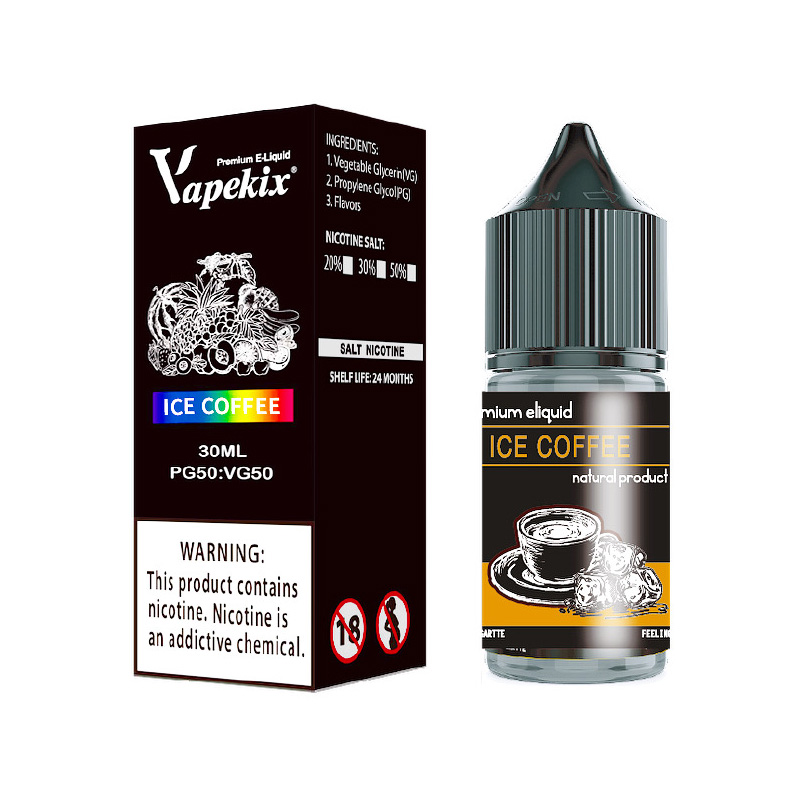Nicotine content of e-liquid
E-liquid is an important part of e-cigarettes, and the nicotine content has a particularly critical impact on users. This article will analyze its impact on users and related information from the perspective of nicotine content in e-liquid to help everyone choose the e-liquid that suits them more rationally.

Introduction to common concentrations
Common e-liquid concentrations on the market include "0mg", "20mg", "30mg", "50mg", etc. Among them, 0mg means that the e-liquid does not contain nicotine, which is suitable for people who do not like nicotine or have no need to smoke; 20mg and 50mg represent that each milliliter of e-liquid contains 20 mg and 50 mg of nicotine respectively, which is suitable for smokers of different levels. In China, the maximum nicotine content is basically controlled within 50mg, and e-liquids exceeding this concentration are not allowed.
However, as market demand continues to change, higher concentration e-liquids have appeared abroad, such as "60mg", generally in multiples of 10, to meet the needs of different consumers.
Nicotine content conversion
The unit "Xmg" for the nicotine content in e-liquid refers to X mg of nicotine per milliliter of e-liquid. When choosing e-liquid, we need to convert the concentration per milliliter based on the packaging capacity to intuitively understand the nicotine content.
For example, if a bottle of e-liquid has a capacity of 10 ml and the nicotine content is "3mg", then the total nicotine content of this bottle of e-liquid is 30 mg. If another bottle of e-liquid has a capacity of 15 ml and the nicotine content is "6mg", then the total nicotine content of this bottle of e-liquid is 90 mg.
Now is the era of nicotine salt. Most nicotine salt content is marked by percentage. For example, 3% nicotine e-liquid is equivalent to 30mg nicotine e-liquid. If it is a 100ml bottle of 3% nicotine e-cigarette oil, then this bottle of e-liquid contains 3 ml of nicotine.
Inhalation effects
Nicotine is a highly addictive substance that when inhaled can make people feel satisfied and relaxed, relieving stress and anxiety. However, long-term inhalation of high concentrations of nicotine may have negative effects on human health.
Short-term effects: Inhaling high concentrations of nicotine may cause symptoms such as dizziness, nausea, and vomiting.
Long-term effects: Long-term inhalation of nicotine may increase the risk of chronic diseases such as cardiovascular disease, lung cancer, and diabetes. In addition, nicotine may also affect the nervous system, causing problems such as difficulty concentrating and memory loss.
Select suggestions
According to different usage scenarios and needs, we recommend choosing e-liquids of different concentrations.
If you want to use e-cigarettes to replace traditional cigarettes, it is recommended to choose e-liquid with a higher concentration (such as 50mg) to help relieve withdrawal symptoms during the process of quitting smoking.
If you are a novice e-cigarette user or do not like the taste of nicotine, it is recommended to choose e-liquid with a lower concentration (such as 0mg) or gradually reduce the nicotine concentration to adapt to the taste of e-cigarettes and reduce dependence on traditional cigarettes.
The nicotine content in e-liquid has a crucial impact on users. This article introduces the common e-liquid concentrations on the market and how to choose the appropriate concentration according to personal needs. In order to ensure personal health, we recommend that everyone pay attention to the nicotine content in e-liquid and choose to use it rationally. At the same time, for long-term smokers, quitting smoking is the best choice.



 Prev: Why is the taste of vapes so different from...
Prev: Why is the taste of vapes so different from... Next:Some experiences with DIY e-liquid
Next:Some experiences with DIY e-liquid


